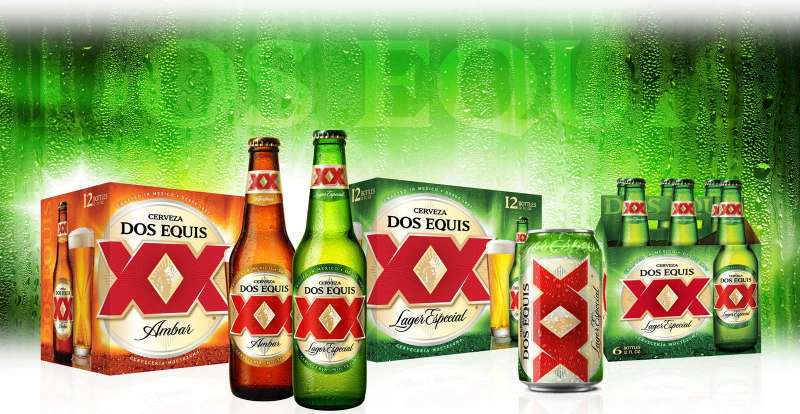Social Media Branding: Everything You Need to Know

Social media is an excellent place to find customers and grow your business.
Your competitors understand this, too. This explains why 91% of small businesses, for instance, have a social media presence. While this stat confirms the opportunities on social media networks, it also gives you a good idea of how intense the competition there is.
So, how can you ensure your business doesn’t get lost in the social media shuffle? That’s where creating a rock-solid and memorable brand becomes very crucial.
How, you ask? Don’t worry. In today’s complete guide, you’ll learn what social media branding is and some tips on how to use it effectively.
Let’s take it from the top…
What Is Social Media Branding?
Social media branding is the process of creating a unique and consistent identity that people can easily associate with your business on social media. Creating this identity involves defining crucial elements, including your brand’s visual elements like the logo, mission, brand voice, and even content.
For example, you can easily recognize Duolingo with its big green owl and funny animations. You also know Wendy’s for their smart and sassy replies. That’s what social media branding can do for a brand.

Besides, when people can associate a specific identity with your business, it naturally gets registered in their memories. So, when they need what you offer, your business has a better chance of popping up in their minds before they think about your competitors.
5 Tips for Social Media Branding
Now that you know what social media branding is, let’s examine five tips you should follow to help you leverage it effectively:
1. Know Your Target Audience
Before creating a branding strategy, it’s important to know your target audience inside out. Otherwise, you risk facing two undesirable outcomes:
- Your audience might not get to see your client’s brand in the first place
- You could end up with a brand that doesn’t connect with them.
So, know their demographics, relevant content and topic preferences, pain points, and customer sentiments.
But how can you get this information?
One way is to ask your existing audience or your customers directly. You can use surveys or polls to get their feedback and opinions.
Another way is to use social listening tools like Hootsuite and Brand24. These tools can reveal, not just the social media platforms your target audience frequents, but also their conversations. From there, you can also uncover their preferences and pain points.
2. Develop Specific Marketing Personas
Once you know who your target audience is and what they want, use this info to create a marketing persona for them. Tools like Hubspot Make My Persona or Userforge can help with this.
A persona is a fictional character that represents a business’ ideal customer. It helps you visualize and better understand the people you want to reach on social media. See, for instance:
Note that sometimes one persona is not enough, especially when your audience is large and diverse. In this case, consider segmenting your audience into various groups based on closely shared characteristics. Then create multiple marketing personas based on this.
For example, you might find out that your audience is divided between Gen Z, who like Instagram, and baby boomers, who like Facebook. Ideally, you should have different personas for each group. You’ll use these personas to guide your social media branding.
This is a strategy Duolingo follows. It explains why it posts funny and relatable videos on TikTok, while publishing industry insights, success stories, and thought leadership on LinkedIn.

Its marketing personas include Gen Z members, who like engaging video content on TikTok, and millennial professionals, who prefer to use LinkedIn and consume its authoritative content.
3. Define Brand Identity
Now you understand the types of content or stories your target audience would love to see. But how do you want the company to come across while telling this story? That’s where your brand identity comes in.
A brand identity has three main elements:
First are the brand’s visual elements. This includes fonts, logos, color palette, and imagery. These elements should be unique and recognizable. They should, ultimately, depend on how you want people to perceive the brand. For example, the red and yellow colors of McDonald’s logo, combined with the Speedee font, evoke feelings of fun and excitement. These are the feelings McDonald’s wants its customers to associate with the company.

Once you’ve determined your visual elements, you’ll need to use them consistently across the company’s marketing platforms, including social media.
The next element of the brand identity is the brand value. This is what the brand stands for. You can easily extract this from the business mission. Lego’s brand mission, for instance, is to “inspire and develop the builders of tomorrow.” That means some of its core values are innovation and imagination.
Like the visual elements, make sure these values appear consistently in your marketing collateral, including your social media posts. This Lego post, for instance, like many others, showcases the brand’s values of imagination and innovation:

The final element of the brand identity is the brand voice. This is the tone and manner in which you communicate with the audience. It could be friendly, authoritative, professional, or even humorous, depending, again, on how you want others to see you. Note that while the first two brand identity elements should be kept consistent on every company social media profile, the brand’s voice might change depending on the persona you’re targeting.
Say you’re a sports apparel brand targeting competitive runners and casual social media fitness enthusiasts. For competitive runners, the brand voice might be more authoritative and data-driven. But for the other category, it might be more relatable and upbeat.
After defining visual and verbal identities, use them to create a comprehensive brand style guide. You can use generative AI tools like Writer to create this if you don’t have the time to write. While there are generative AI risks like hallucinations, you can easily counter these with measures such as fact-checking and custom training.
This brand style guide will serve as a reference for anyone who wants to create content for your brand on social media. It helps you achieve consistent branding.
4. Embrace Short-Form Video Content
For effective social media branding, you need people to consume the brand’s social media content on a regular basis. That’s the only way you’ll get people to associate specific identity elements with the company. How do you think people got to associate the red “M” with McDonald’s? Over the years, they simply interacted with the brand’s marketing collateral that consistently displayed that logo.
In other words, for effective social media branding, you also need engaging social media content.The most engaging type of content, according to 54% of marketers, is short-form video.

The ideal short-form video should be around 11 to 60 seconds long:

What kinds of short-form videos can you create? Well, that depends on what your audience wants. Remember, your goal is to get them to consume your content. So, look at your personas again to see their problems and preferences. Then create educational content based on what you find.
Another good idea would be to share posts that can humanize your brand–for example, day-to-day operations, team activities, behind-the-scenes, etc. These help audiences connect with the company on a personal level. See Skittles, for instance:

You can also create content aligned with trending topics and challenges. These short videos can help you amplify your reach.
5. Develop Partnerships with Creators
Partnering with creators can help your social media branding game big-time. These partnerships can involve everything from creators crafting social posts for your brand to them holding social media giveaways that promote your values.
With these collaborations, you can extend your reach to a wider audience (your chosen influencer’s audience). When more people are exposed to the company’s social media branding through these creators, more people will associate your brand with the identity elements it wishes to be associated with.
But how do you find the right partners? Look for creators who have similar values and target audiences as you.
Nike, for instance, which sells clothing and shoes, tapped London-based fashion influencer Simran Randhawa to create social content that aligns with the company’s values:

The best way to find these creators is to search for hashtags or keywords related to the brand on social networks, as shown below. Then, see who is creating good content about that topic and has engaged followers:

You have to be smart about reaching out to these creators. Suppose they’re not following you. Sending them a DM isn’t advisable because your message will most likely end up in their request inbox and go unnoticed. To ensure that they see your pitch, contact them via email. You can use email finder tools to get their addresses.
Now if you can pay these creators for the collaboration, great. But what if you have a limited budget?
Building a relationship with creators can help increase your chance of securing a collaboration for free. That would typically involve engaging with the creator’s posts or sharing other mutually beneficial offers. For instance, why not invite them to a brand event they can cover exclusively?
In Closing
Social branding is essential for any business that wants to stand out on social platforms. It ensures the intended audience associates your brand with the right values. At the same time, it helps ensure they remember you.
This complete guide covered five tips to follow for your social media branding efforts. Know your target audience then create specific marketing personas based on what you find. Don’t forget to define the company’s brand identity as well. Also, leverage short-form content to get people to consume your social media content in the first place. To effectively promote your social media branding, partner with influencers.
Apply these branding tips, and you’ll create a memorable brand on social media that’s key to its success.
- Luxury Fonts: What Font Does Dior Use? - 17 May 2024
- The Dos Equis Logo History, Colors, Font, And Meaning - 16 May 2024
- Purple Color Palettes Fit for Royalty - 16 May 2024










